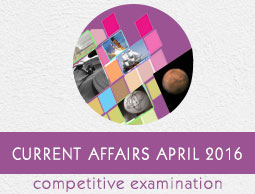
- Appointments
- Awards
- Deaths
- Defence
- Economic
- Environment
- Banking
- Important Days
- International
- Miscellaneous
- National
- Persons in NEWS
- Places in NEWS
- Regional
- Reports
- Resignations & Retirements
- Sports
- Science & Technology
- Various Committees
- Books & Authors
- April 2016 - Exams Resources
- Current Affairs - Quiz
- Current Affairs - Test
- Current Affairs - PDF
Current Affairs April 2016 - Technology
News 1 - LIGO observatory set up in India

The MoU was signed between Indias Department of Atomic Energy and the US' National Science Foundation (NSF) on setting up Laser Interferometer Gravitational-wave Observatory (LIGO) in India, on the sidelines of the Nuclear Security Summit in Washington. The Union cabinet had said "LIGO-India will also bring considerable opportunities in cutting edge technology for the Indian industry" which will be responsible for the construction of the new observatory's 4-kilometer-long beam tubes.
Indian scientists at Raja Ramanna Centre for Advanced Technology (RRCAT) Indore have designed a special testing/prototype facility for receiving Advanced LIGO parts; have been training the teams that will install and commission the detector; and are currently cross-checking the IPR vacuum-system drawings against the Advanced LIGO detector drawings, to ensure a good fit and rapid installation for the third Advanced LIGO detector.
News 2 - Asia's largest Optical Telescope ARIES launched at Devasthal
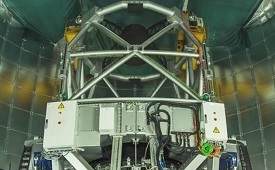
01/04/2016 Indias largest ground-based optical telescope, in Devasthal in Uttarakhand, switched by the prime ministers of India and Belgium from Brussels, during Narendra Modis day-long visit to the country. Aries, the largest optical telescope of its kind in Asia, is a product of Indo-Belgian collaboration and will replace Vainu Bappu Observatory in Kavalur, Tamil Nadu to be Asias largest ground-based optical telescope.
It will be used to study star structures and magnetic field structures of stars. The work is also afoot on other agreements in the areas of Information and Communication Technology, audio-visual production Tourism biotechnology and shipping and ports.
News 3 - The first 3D map of Zika virus structure revealed
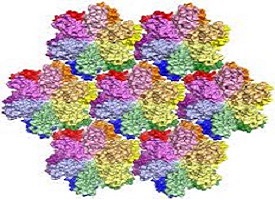
According to a study published in Science journal, researchers of the Purdue University in Indiana in United States have successfully revealed the first 3D map of the Zika virus structure.
It can prove to be a major breakthrough in the battle against the mosquito-borne Zika virus as it provides a map that shows potential regions of the virus that could be targeted by a therapeutic treatment. It can further help to create an effective vaccine or to improve ability to diagnose and distinguish Zika infection from that of other related viruses.
News 4 - Indian Scientists develop eco-friendly nanotechnology for water purification
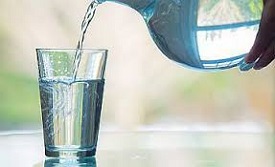
A team of scientists from Guwahati (Assam) based Institute of Advance Study in Science & Technology (IASST) have developed an eco-friendly biopolymer using nanotechnology for water-softening and water purification applications.
The biopolymer has been created using a naturally occurring substance, called chitosan and can be used in civic water treatment plants for generating potable water.
News 5 - China launched SJ-10 retrievable space science probe
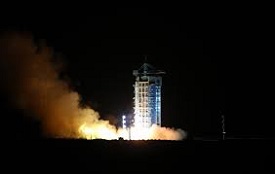
China successfully put into space a retrievable (returnable) scientific research satellite SJ-10 (Shijian-10). The bullet-shaped satellite was launched aboard Long March 2-D rocket from the Jiuquan Satellite Launch Centre in northwestern China's Gobi Desert.
The satellite will help scientists back on Earth in studying microgravity and space life science. SJ-10 is the second of four scientific satellites under a CAS space program and the 25th such retrievable satellite launched by China in the past decades.
News 6 - Worlds smallest diode developed
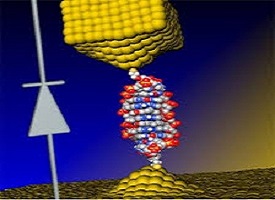
The world's smallest diode of a size of a single molecule, has been developed jointly by U.S. and Israeli researchers from the University of Georgia and Ben-Gurion University of the Negev (BGU). The study was published online in Nature Chemistry.
The discovery can lead to progress in the design and construction of nanoscale electronic elements that are at least 1,000 times smaller than current components.
News 7 - Low Cost Micro Solar Dome Surya Jyoti launched
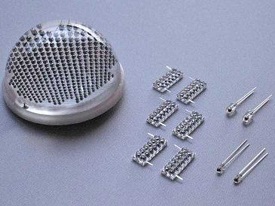
Union Minister for Science & Technology and Earth Sciences, Dr. Harsh Vardhan, launched the Low Cost and Environment-friendly solar lighting device, Surya Jyoti. The device has been developed under the aegis of the Department of Science & Technology.
It would prove to be a boon for the urban and rural households in the country that do not have reliable access to electricity. Photo-Voltaic Integrated Micro Solar Dome costs about Rs.1200 and the Non Photo-Voltaic version around Rs. 500.
News 8 - Gravity Gobbler Black Hole weighing 17 billion Suns Found in Cosmic Backwater
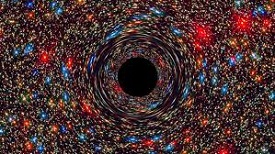
The astronomers at National Aeronautics and Space Administration (NASA) discovered a super massive Black Hole in the center of a galaxy in a sparsely populated area of the universe.
The supersized black hole resides in the center of a massive elliptical galaxy, NGC 1600, located in a cosmic backwater, a small grouping of 20 or so galaxies, which weighs about 17 billion times the mass of Sun," said astronomer Chung-Pei Ma, head of the MASSIVE Survey.
News 9 - Falcon 9 rocket successfully landed on a floating drone ship by SpaceX
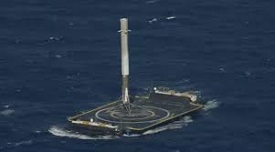
The SpaceX successfully landed Falcon 9 rocket on a drone ship at sea after being launched into space. This was the first time that the company succeeded in landing the rocket in Ocean.
This was the second time SpaceX successfully landed one of its rockets post-launch, the first time was on 21 December 2015, when the company's Falcon 9 rocket touched down at a ground-based landing site in Cape Canaveral, Florida, after putting a satellite into space.
News 10 - World's Thinnest Laptop Introduced by HR Inc. (Hewlett-Packard)
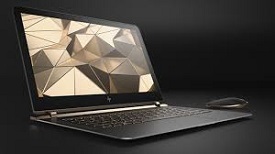
The American IT company HR Inc. (Hewlett-Packard) launched world thinnest laptop of 10.4 mm thickness, 13.3-inch full HD screen and weighs 2.45 pounds only. It has battery backup of 9 and a half hours. Surprisingly, the display isn't a touch-screen, and there's no option to get one.
The IPS screen still looks sharp from a working distance and while a touch-screen and 4K would have been added plus points.
News 11 - NASAs Kepler Spacecraft goes into Emergency mode
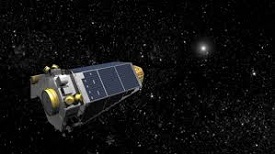
NASAs Kepler spacecraft has gone into emergency mode (EM). Emergency Mode is the lowest operational mode during the orbit.
Launched in March 2009, the spacecraft looks for Earth-like planets orbiting other stars. Since its launch, the mission has been highly successful. It has led to finding of more than 1,000 alien planets of which almost half are exo-planets to be ever discovered.
News 12 - Chinese researchers develop all-weather Solar Cell
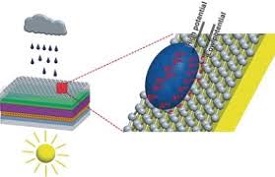
A group of researchers from the Ocean University of China and Yunnan Normal University have developed a new type of solar cell that can generate electricity during rain. The prototype solar cell uses "Graphene" which allows electrons to flow freely on its surface.
Rain water consists of bits of salt that separate into positive and negative ions. Graphene, on the solar panels, lets positive ions pair with negative electrons to produce electricity as the end product.
News 13 - Infosys co-founder S Gopalakrishnan launched Itihaasa App which chronicles Indian IT journey
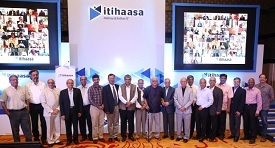
Infosys co-founder S Gopalakrishnan launched a new app named Itihaasa. The app narrates the Indian IT journey since the 1950s with 600 videos featuring 44 technology stalwarts.
It contains extensive archives of newspaper articles on the Indian IT industry. There are 12,000 plus tags. It also contains extensive interviews of icons like TCS founder FC Kohli, Wipro's billionaire chairman Azim Premji and Infosys founders NR Narayana Murthy and Nandan Nilekani. It follows the installation of the country's first modern computer in 1955 to crystal gazing on Indian IT in 2040.
News 14 - Worlds lightest material Silica Aerogel made by Indian Scientists
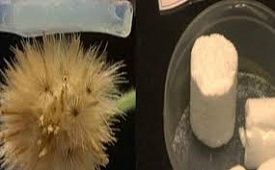
The Scientists at the Vikram Sarabhai Space Centre, Thiruvananthapuram manufactured the world's lightest synthetic material called silica aerogel or blue air or frozen smoke.
This material has excellent thermal resistance. It can be used as a filler in soldiers' uniforms making it useful at places like Siachen glacier. The material has uses both in space and on Earth. It can be used to insulate rocket engines. Silica Aerogel is the lightest synthetic material ever made by man. The material is likely to be used on India's moon rover in Chandryaan-2 mission.
News 15 - PSLV-C33 Successfully Launches India's Seventh Navigation Satellite IRNSS-1G
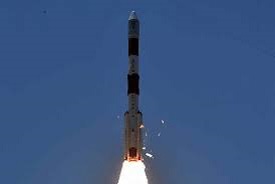
ISRO's Polar Satellite Launch Vehicle (PSLV-C33) successfully launched the 1425 kg IRNSS-1G, the seventh satellite in the Indian Regional Navigation Satellite System (IRNSS) from Satish Dhawan Space Centre, Sriharikota. This is the thirty fourth consecutively successful mission of PSLV and the thirteenth in its 'XL' configuration.
The Prime Minister dedicated IRNSS to the nation as NavIC (Navigation Indian Constellation). IRNSS is an independent regional navigation satellite system designed to provide position information in the Indian region and 1500 km around the Indian mainland.
News 16 - World's 1st historical graphene based e-paper made in China
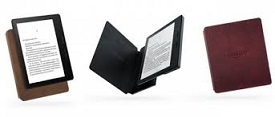
The Guangzhou based OED Technologies of China made a breakthrough after it developed a brand new technology described as the worlds first graphene electronic paper. OED Technologies collaborated with a Chongqing-based firm to create the electronic paper.
E-paper is utilized in many modern digital devices including smart devices and e-readers. It is extra economical and environment friendly than liquid crystal displays. E-papers are generally extra energy efficient, pliable and thinner. Graphene is the world's strongest and lightest known material; a single layer of graphene is only 0.335 nanometers thick, and it can conduct heat and electricity.